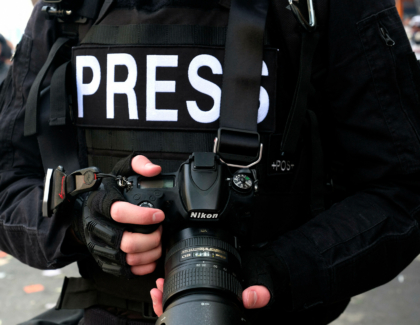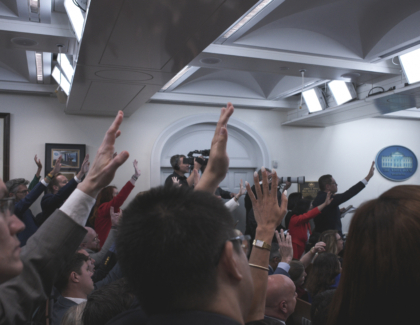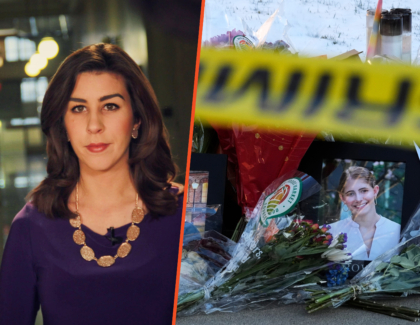Sign up for the daily CJR newsletter.
Pundits and journalists tend to pontificate through slow news periods. When there is no news, guess work fills the vacuum––on cable television, news sites’ listicles, and Twitter. That inclination becomes especially apparent during elections, from the moment polls open to the moment a winner is declared (if not certified). Last week, on election day in New York, CJR’s Jon Allsop suggested that, with a new voting system in play and inconsistent polls, journalists should “eschew prognostication” and get comfortable with uncertainty. Surprise! That did not happen.
On election night, Eric Adams, a relatively moderate Democrat, appeared to have an insurmountable lead, even though more than a hundred thousand absentee ballots had yet to be counted and the automatic runoff rounds, triggered by the city’s new ranked-choice voting system, had not yet been tallied. The election was up in the air, with everything seeming to hinge on Adams, a candidate who defies easy characterization. The hot takes, written with conviction, were everywhere: Maya Wiley’s constituency is the “progressive, nonprofit world” and has limited appeal; Twitter is not real life, and therefore a poor bellwether. Adams himself weighed in, saying he is “the new face of the Democratic party.” As Jake Bittle, an independent reporter, put it: “It is really funny to watch national pundits attempt to graft their takes about the Democratic electorate onto the candidacy of Eric Adams, one of the weirdest and most idiosyncratic people ever to walk the earth.”
New York City’s elections have since spiraled into a predictable mess. On Tuesday, as the infamous New York City Board of Elections––beleaguered by cronyism and ineptitude––ran preliminary ranked-choice rounds, reporters and election-watchers had noticed odd discrepancies: for instance, massive increases in votes for candidates that failed to gain traction. It turned out that the board had released results that erroneously included 135,000 test ballots. Then on Wednesday, the board released an accurate count, after which it seemed that the outwardly progressive candidates may be eliminated, and the race could come down to two (very different) moderate Democrats. And oh, how the national news takes rolled out! People don’t want to defund the police! (Perhaps, but Adams is likely best known, by many longtime New Yorkers, for his years of police reform advocacy.) The campaigns were awful! Working class, Black and Latinx voters want centrism!
New from CJR: Sixty news consumers discuss their distrust in the news
The problem with this, beyond shoddy analysis, is that encouraging local elections to play out on a national scale has consequences. As Caleb T. Carr, a communications scholar, argues, political candidates––“from Senator to Alderperson”––play to larger audiences than the place in which they’re campaigning. That enables “surreptitious global influence of local elections,” Carr writes. It also means candidates use important local offices as global soundstages. (See: Andrew Yang.)
New York City is a cautionary tale in looking to deduce national trends from local events. Many reporters are based here, and so local ongoings already receive outsized attention. But the city has not yet started counting the 120,000-plus outstanding absentee ballots, after which the ranked-choice tally will begin in earnest. So far, as Alex Pareene wrote in The New Republic, “Most of the lessons pundits can really draw from this partial result apply mainly to politics in New York and perhaps a handful of other very large and demographically similar cities.”
Local elections are, of course, reflections of their localities. To attempt to retrofit someone like Eric Adams into neat categories that fit a broad swathe of the nation’s electorate is to concede failure at political writing. As local news shrinks, the reaction to New York’s elections (and, to a lesser extent, those in Virginia) demonstrates how local happenings are frequently ripped from their context by national news outlets and refashioned into fodder for pundits. This dynamic also tends to result in more partisan voting. (“The death of local news,” CJR’s Lauren Harris wrote in 2019, “correlated with decreased split-ticket voting in that area.”)
The take machine can deal with lots of possibilities and outcomes. What may be incomprehensible to pundits and many others in the political press is that voters in local elections––many of whom are more civically engaged than the average citizen, to be sure, but are generally not reading dozens of news articles per day––are capable of patience. They have lives that do not entail refreshing the Board of Elections website. They are less driven by ideology than the press may like to believe. And they can handle updates that do not end in extrapolations of what every new vote count might mean for the Future of the Democratic Party. We should consider the possibility that what serves voters best is not rushing to fill dead air.
Below, more on New York and the press:
- On the podcast: Last week, Errol Louis, host of NY1’s politics show, Inside City Hall, was on CJR’s podcast, The Kicker. He spoke about the fragile local-news ecosystem and Adams’s relationship with the local press.
- Board reform: Following the recent New York City Board of Elections fiasco, journalists, politicians, and citizens alike have called for reform, which will require action from Albany. It seems the Democratic supermajority in the state capital may be ready, at last, to reform the infamous agency.
- More from Albany: The impeachment inquiry into Andrew Cuomo is still ongoing. Yesterday, Politico reported that the state Assembly’s impeachment committee would begin issuing subpoenas. The investigation deals with a number of accusations, from sexual harassment to misuse of state funds, many of which were exposed by the local press.
Other notable stories:
- Last night, Nikole Hannah-Jones, a staff writer at the New York Times Magazine and the creator of its 1619 Project, was awarded tenure at the University of North Carolina. In April, the university’s journalism school announced that it had appointed Hannah-Jones as its Knight Chair in Race and Investigative Journalism. Then in May, the university’s board of trustees denied her tenure––a controversial, and unusual, decision. Hannah-Jones and her groundbreaking work on civil rights, and the modern effects of American slavery, had become a flashpoint in the “concocted right-wing panic about ‘critical race theory,’” as Allsop wrote last week. Students rallied outside the closed-door meeting to show support for Hannah-Jones. Police pushed, slapped, and punched them.
- Donald Rumsfeld, former secretary of defense and architect of the Iraq War, has died. Many are recalling the cozy relationship, during the height of Rumsfeld’s power, between the government and the press, much of which helped advance the false pretenses on which the invasion of Iraq was built. “Rumsfeld was the worst secretary of defense in American history,” George Packer writes in The Atlantic. “Being newly dead shouldn’t spare him this distinction.”
- In May, editorial staffers of The Appeal, a criminal-justice news site, announced their intent to unionize. Minutes later, the site’s executive director announced a set of impending layoffs. Yesterday, staffers announced that, though the site planned to shutter, they would relaunch The Appeal as a worker-led outlet. “The transition team sees this effort as an opportunity,” reported Defector’s Laura Wagner, “not only to create a better workplace for themselves but to change the ways in which power is conceived, both in the newsroom and in their work covering exploitation, injustice and inequality in the criminal legal system.”
- Journalists were among the approximately 2,300 prisoners released in Myanmar yesterday. Most of the prisoners were arrested on charges relating to protests; according to the Associated Press, “there was no reason given for the timing of their release.” Since a military coup overtook Myanmar, journalists have been imprisoned, beaten, and harassed, Kyaw Hsan Hlaing and Emily Fishbein wrote for CJR in March. Others have fled the country.
- In more press-freedom news, Nicaragua’s Daniel Ortega and Rosario Murillo continued their crackdown on political opposition and the independent press. Citing a treason law, several prominent journalists have been arrested, along with five potential presidential candidates. Last week, Carlos Fernando Chamorro, one of Nicaragua’s most famous journalists, went into exile. For CJR, Oswaldo Rivas captured the rapid decline in press freedom, since massive protests against the government in 2018, in a photo essay.
- And St. Louis alt-weekly the Riverfront Times, published a lesson in candor, with its coverage of a political rally held by Mark and Patricia McCloskey––you may know them as the “St. Louis gun couple,” who waved guns around as protestors marched through their neighborhood. “Noted local criminal Mark McCloskey played host to a barbecue/political rally on Sunday afternoon,” Daniel Hill wrote, “drawing tens of admirers to the sweltering parking lot of a closed outlet mall in St. Louis County to celebrate the one-year anniversary of the time he pulled a gun on a crowd of people who otherwise would never have noticed or cared he existed.”
Has America ever needed a media defender more than now? Help us by joining CJR today.







